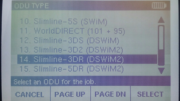Today, everyone who buys a TV buys a 4K TV. They are cheap enough that you don’t think about it. But why do you call it 4K? Actually, they’d rather you call it “Ultra HD.” The people who make 4K televisions approved that term about a decade ago and ever since, most TV makers have desperately hoped you would use it.
And let’s be honest, we still call it 4K. The only question is, “why?”
It goes back further than you think
The answer actually goes back about 30 years. Back then, “high definition” was a term used for computer monitors with a resolution of 1024×768. (This is probably lower resolution than your phone, and these monitors cost a kajillion dollars.) The popular term at that time was “megapixel display” but that wasn’t quite accurate. The resolution of a 1024×768 display is actually .75 megapixels. In order to have a true “megapixel display” the resolution would need to be 1024×1024 and then the pixels wouldn’t be square.
I don’t know who decided on this compromise but at some point people stopped calling this a “megapixel display” and started calling this a “1K display.” This was more accurate because there was exactly 1 kilopixel (1024 pixels) per horizontal line.
The term “1K display” sort of fell out of favor eventually because people stopped caring about 1024×768 resolution as monitors got bigger and wider and everyone wanted more. That is, until HDTV came into play.
When HD came to town
It became popular in the early days of HD to refer to the highest possible resolution of an HD screen (1920×1080) as a “2K display” or “2K x 1K” display. That wasn’t terribly accurate because a true 2K display would be 2048×1024. However, again those numbers wouldn’t yield square pixels and the actual number is close enough that people let it slip by. (Ironically, at 2,073,600 pixels, an HD screen is also close to 2 megapixels, which would be 2,097,152 pixels. But no one called it a 2 megapixel display, ever.)
When proposals started floating in the late ’00s for the next standard, the goal was to double the quality of HD, to 3840×2160. That’s a lot of dots, let’s be honest right there. And since people were calling the highest resolution of an HDTV 2K, they decided to call the next version 4K. And if you’re curious, they call the next one 8K already.
You’re not alone, though…
…if you hadn’t heard the term “2K.” People tend to call the highest resolution of an HDTV “1080p” and while that’s sort of accurate, it’s not completely accurate because the “p” has nothing to do with the resolution. It’s all about how the picture is displayed. There were some people who wanted to call the next generation “2160p” but that term fell by the wayside while people were arguing about what the next generation is going to be. There was a faction who wanted it to be 4096×2304, and the movie theater world uses 4096×2160 for their 4K presentations.
And from there the “4K” term just sort of stuck. No matter how much the “Consumer Electronics Association” or anyone else wants you to call it “Ultra HD…” chances are you won’t. And that’s ok, because it’s just a word and people will know what you mean.)
By the way, if you’re looking for accessories for your 4K TV such as satellite equipment, call the experts at Signal Group. We’re here for you during East Coast business hours. Call 888-233-7563, or if it’s after hours just fill out the form below.





